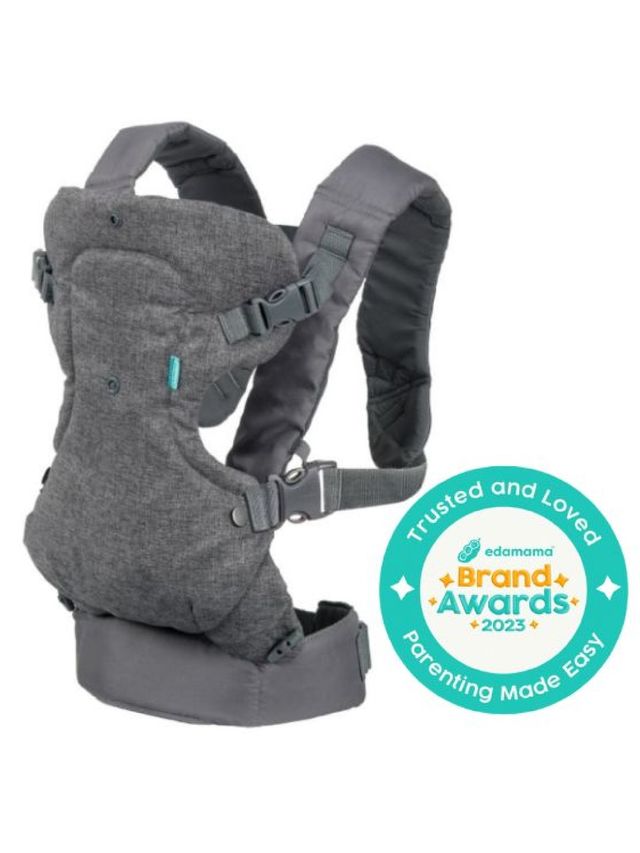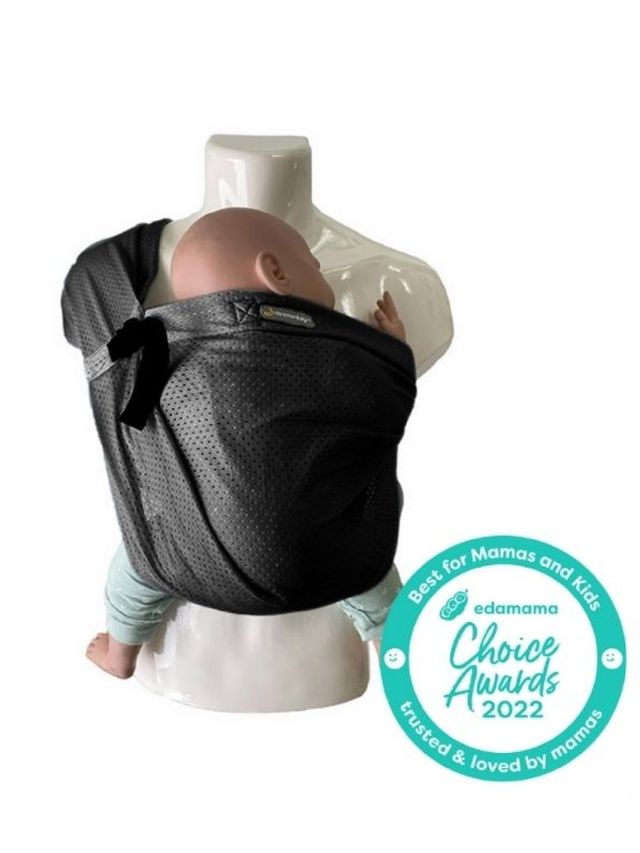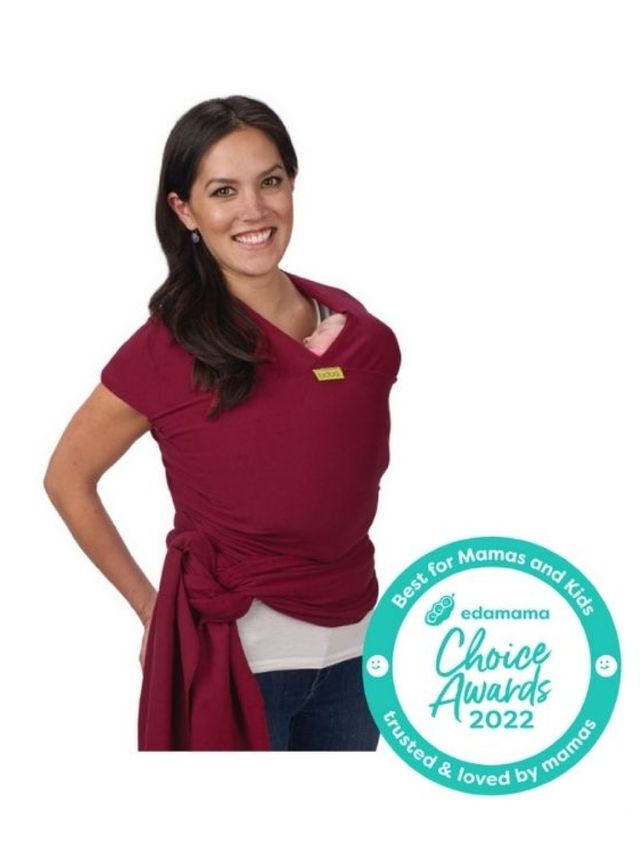
The practice of baby wearing is something to consider as new parents! As you enter motherhood, things may get busier than usual. It is understood that Mamas always would want to be with their little ones despite the different tasks or errands that need to be accomplished in a day, however, worry not because that could be possible when you try baby wearing!
Baby wearing involves the carrying of a baby using a carrier, a wrap, or even a sling. This method of bringing your baby anywhere has become popular in the modern times – thanks to its benefits. In this read, we aim to provide Mamas knowledge and tips on how to do baby wearing in order to keep their little ones secure.
Baby Wearing Benefits

When it comes to the benefits of baby wearing, there are some to take note of in different aspects – emotional and intellectual growth. There are studies about baby wearing that showed a connection towards attachment and parents’ bonding with their little ones. It was discovered that parents who opt to do baby wearing are more responsive to their baby’s needs. Not only that, but it also showed that the language development of their little ones are positively affected as well (Dodwell, 2021). For the parents’ end, baby wearing helps in lessening the cries of their babies as it allows you to be close to your little ones.
In addition, baby wearing promotes health according to a study. The said research states that when parents wear their babies, it helps in regulating the little one’s heartbeat, temperature, and breathing patterns (Marcin, 2021). Of course, another advantage of baby wearing is the ease and convenience it brings to parents. This is mostly because baby wearing is hands free! Hands are available to do daily tasks while taking care of your baby.
Baby Wearing Tips

Before you try baby wearing, here are some tips that you must take note of! Remember that despite it becoming an easier way to carry your little one, you must still practice safety. There is a learning curve for everything, including baby wearing!
For instance, proper positioning and tightness must be considered. Here, the baby carrier chosen must be a great fit for your little one. This is to ensure that they fit perfectly and will avoid being loose. Make sure that you place your baby correctly in the right position. There is an acronym that you can remember when you’re about to do baby wearing. It’s best to remember TICKS* for your baby’s safety (Sinclair, 2021):
T = Tight
The carrier you will be using must be tightened and hug your body so that your little one is secured, making them placed in a safe position.
I = In View at All Times
As someone who would carry your baby, it is important that you have visibility over them to confirm their comfort and to hear their breathing. This is because the risk of improper positioning is giving your baby a hard time to breathe due to a blockage in their airway.
C = Close Enough to Kiss You
The distance between you and your baby should be measured in a way that you should easily be able to kiss the top of their heads. When you are forced to lean down, that means they are positioned too low or far from you.
K = Keep Chin off the Chest
Moreover, there must be a space for two fingers between the bony part of your baby’s chin and chest. This is also to make way for their airway.
S = Supported Back
The carrier must have been intact and be tight enough to support the natural curve of their backs. They should not be placed in a slumped down position as this indicates the carrier being loose.
Choosing the Perfect Baby Carrier
There are a lot of different baby carriers that Mamas can choose from. You must take note of the following factors prior to choosing one: age of your baby, body type, budget, and personal preferences (Marcin, 2021).
A friendly tip for parents is to ‘try before you buy’ as this can help in finding the perfect and most appropriate one for your baby. Here are some of the types of baby carriers Mamas and Papas can check out (McClure, 2020):
1. Classic Baby Carriers
These are carriers usually worn in front of your body that have a padded structure that helps in supporting your baby’s head, back, and bottom. This keeps your little one intact around your body using adjustable straps.
2. Ring Slings
Ring slings are made out of soft, non-stretchy fabric that are connected through two small rings. The sling is oriented in a diagonal position across the body, coming from the shoulder to the opposite hip. This type of carrier allows Mamas and Papas to have their babies faced towards their body, but it can also be used facing outwards when carrying a toddler.
3. Wraps (Stretchy or Woven)
Wrap carriers can either be stretchy or woven. You can tie it around your body, depending on your preferred way. They come in a variety of lengths in which you have to check on your body types. Stretchy wraps are typically made of elasticated fabrics where you have the ability to wrap it around yourself and then adjust or stretch as you place your little one in. Meanwhile, the woven wraps tend to be cotton where it is a sturdier material, making it more preferable for toddlers or bigger babies.
Given all of these types, as a new parent who is looking for a new baby carrier, always remember that it's important to find a carrier that is high quality, durable, and comfortable for both you and your little one. You may also view more of our available high-quality baby carriers on our edamama website.
References
Dodwell, E. (2021). Babywearing is healthy, if done the right way. HSS. https://www.hss.edu/article_babywearing.asp
Marcin, A. (2021). Guide to baby wearing: Benefits, safety tips, and how to. Healthline. https://www.healthline.com/health/parenting/baby-wearing
McClure, C. (2020). Babywearing: types of slings and carriers. Babycentre. https://www.babycentre.co.uk/a559735/babywearing-types-of-slings-and-carriers
Sinclair, C. (2021). 7 babywearing tips for beginners. Today’s Parent. https://www.todaysparent.com/baby/baby-development/babywearing-tips-for-beginners/
###



